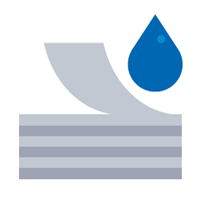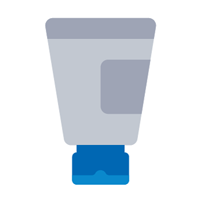The risk of skin damage amongst elderly patients is likely to be high¹. However, in any clinical setting where excess bodily fluid and moisture combine with immobility, pressure, shear and friction, the risks are elevated². Such cases are a major challenge for all health professionals.
Whilst evidence shows highest incidence rates of moisture-associated skin damage (up to 29 per cent³) occur in critical care, departments like maternity, operating room and even accident and emergency also see these risk factors combining to cause skin breakdown.
For this reason, a simple and effective skin health-centric strategy is essential, whatever the clinical setting.


STEP 1 – Cleanse the skin
Cleanse the skin thoroughly to remove all irritants, including bodily fluids. When exposed to urine and/or faeces, the skin’s pH changes, and this causes an increase in permeability and a reduction in the natural barrier function. Cleansing the skin also ensures the natural function of the skin is maintained (Wounds UK Best Practice statement, 2012).
Following cleansing, ensure the skin is completely dry.


STEP 2 – Keep excess moisture away from the skin
Where there is the risk of exposure of the patient’s skin to excessive moisture and fluids, place an appropriately sized Ultrasorbs Drypad under their body. This will absorb and wick away the moisture, helping to keep the skin dry.


STEP 3 – Protect and moisturise the skin
Apply a moisturising barrier cream and/or film to moisturise and protect vulnerable skin, creating a physical barrier and minimising exposure to irritants and excessive moisture, such as bodily fluids. Where skin has become compromised, Marathon™ Skin Protectant provides a strong protective layer by way of a cyanoacrylate base.
Good nutrition and hydration
Ensuring patients maintain a healthy weight and good fluid intake helps protect the integrity of their skin. They should have a balanced diet and an intake of 6 – 8 glasses of water per day. Poor nutrition and hydration below the recommended level greatly influence all wound healing by hindering tissue and skin repair.
Additional education resources
Related Products
Medline’s moisture management solutions help reduce incidence rate of MASD and align strongly with the MINIMISE Moisture™ theme championed with initiatives like MASD Awareness Day.
References
1. Collier Mark (2016). Protecting Vulnerable skin from moisture associated skin damage, British Journal of Nursing, 25, No 20: Tissue Viability Supplement1. Collier Mark (2016). Protecting Vulnerable skin from moisture associated skin damage, British Journal of Nursing, 25, No 20: Tissue Viability Supplement
2. https://resolution.nhs.uk/wp-content/uploads/2018/10/Did-you-know-Maternity-Pressure-Ulcers.pdf
3. Valls-Matarín, et al. (2017). Incidence of moisture-associated skin damage in an intensive care unit, 28(1), 13–20
4. https://resolution.nhs.uk/wp-content/uploads/2022/03/3-NHS-Resolution-ED-report-Hospital-acquired-pressure-ulcers-and-falls.pdf






